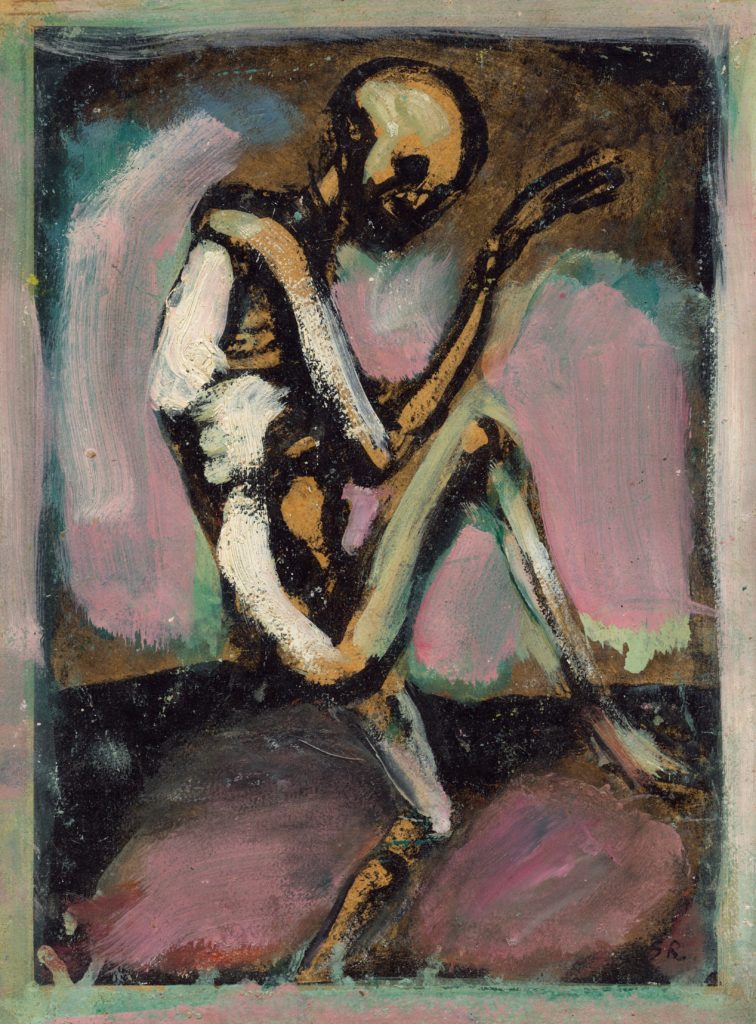“Aucuns t’appelleront une caricature,
Qui ne comprennent pas, amants ivres de chair,
L’élégance sans nom de l’humaine armature.
Tu réponds, grand squelette, à mon goût le plus cher !”
Charles Baudelaire, « Danse Macabre » in Fleurs du Mal
This is a wonderful piece of Georges Rouault’s series dedicated to the illustration of the Fleurs du Mal by Charles Baudelaire. The Squelette was originally one of the fourteen black and white aquatints printed in 1927 to be published by Ambroise Vollard. But the project was never finished, and it is only in 1966, after the artist’s death, that the book came out. Rouault obviously received a few copies of the prints in 1926, and he must have painted a few copies by hand with oil, such like Danse Macabre I. It is now considered as a painting, in the catalogue raisonné of Bernard and Isabelle Rouault Dorival. The palette here is restricted but powerful: strong black and white, pink, green and ochre. In the 1930’s, the artist published books with prints with a similar brunch of colors. However, the gorgeous pink, which contrasts here with the green and grey of the composition, has been rarely used elsewhere by the artist.
Rouault had a long-time fascination for Baudelaire and thought about illustrating his poetry collection very early in his career. Certainly, the acquaintance between his teacher Gustave Moreau and Baudelaire played a key role in this. His interpretation of the poem Danse Macabre shows how he created a dialogue between Baudelaire’s imagery and his own expressive vision. The artist, by his own words explained his position towards the poet’s work : “Je m’estimerais heureux, écrit Rouault, si l’on peut dire de ces gravures que je suis un peu dans l’atmosphère du poème, non comme serviteur trop scrupuleux, désireux de commenter le texte mais comme un frère modeste et compréhensif.”
Close to the Fauves – Rouault studied at the Académie des Beaux-Arts, pupil of Gustave Moreau, with Matisse and exhibited with the group at the Salon d’Automne in 1905 – the artist emphasized his subjects with expressionist colors and features. Furthermore, Rouault had been an apprentice in a glazier’s studio, from 1885 to 1890. This experience made him familiar with the medieval art of stained-glass windows, which had a significant impact on his aesthetic style. In the present Danse Macabre, this influence of gothic art is visible, with the large and expressive black outlines, and the transparent colors, adding some expressivity and dynamism to the skeleton movement.






